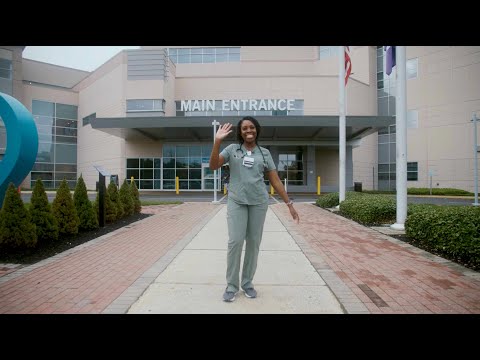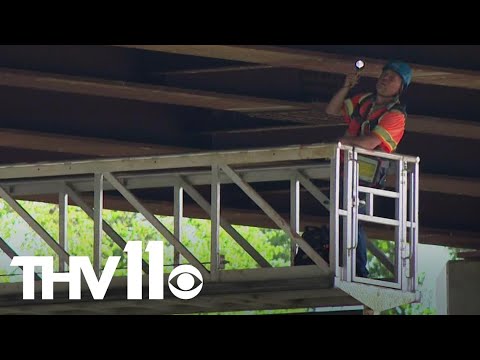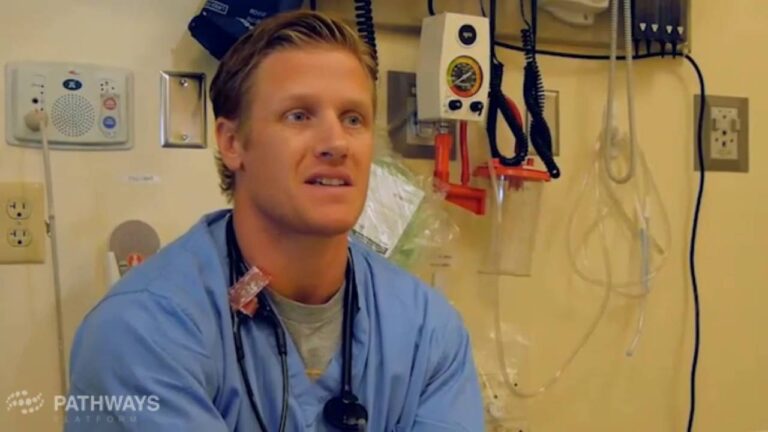High-Paying Job: Registered Respiratory Therapist – Learn More!
Registered Respiratory Therapist Job Description
A Registered Respiratory Therapist (RRT) is a healthcare professional who specializes in providing respiratory care to patients with breathing disorders. Their main responsibilities include assessing patients’ respiratory conditions, administering treatments, and monitoring their progress. RRTs work closely with physicians to develop and implement appropriate treatment plans for patients.
Registered Respiratory Therapist Salary
The salary of a Registered Respiratory Therapist varies depending on factors such as experience, location, and the healthcare facility they work in. According to the Bureau of Labor Statistics, the median annual wage for respiratory therapists in the United States was $61,330 as of May 2020. However, RRTs with advanced certifications and those working in specialized areas may earn higher salaries.
In addition to their base salary, RRTs may also receive benefits such as health insurance, retirement plans, and paid time off. Some healthcare facilities may offer additional incentives such as bonuses or tuition reimbursement for further education and training.
Overall, the job outlook for Registered Respiratory Therapists is promising, with a projected growth rate of 19% from 2019 to 2029. This demand is driven by an aging population and a higher prevalence of respiratory conditions such as asthma and chronic obstructive pulmonary disease. As such, RRTs play a crucial role in providing quality care and improving the lives of patients with breathing disorders.

Registered Respiratory Therapist Job Description Template
A registered respiratory therapist (RRT) is a highly skilled healthcare professional who specializes in providing respiratory care to patients of all ages. They work under the supervision of physicians and are responsible for assessing, treating, and managing patients with respiratory disorders and conditions.
The main responsibilities of an RRT include conducting diagnostic tests, such as lung capacity and oxygen level measurements, analyzing the results, and determining appropriate treatment plans. They administer medications, perform chest physiotherapy, and provide mechanical ventilation to patients in need. RRTs also educate patients and their families on respiratory care techniques, such as breathing exercises and the proper use of inhalers.
In addition to patient care, RRTs are also responsible for maintaining and calibrating respiratory equipment, such as ventilators and oxygen therapy devices. They assist in emergency situations, such as cardiac arrest or trauma, by providing respiratory support and managing airways. Documentation and record-keeping of patient treatments and progress are also crucial aspects of their job.
To become a registered respiratory therapist, individuals must complete an accredited respiratory therapy program and pass a national certification exam. Strong communication and interpersonal skills are essential for effectively communicating with patients, their families, and other healthcare professionals. Attention to detail, critical thinking, and problem-solving abilities are also important qualities for an RRT.
In conclusion, a registered respiratory therapist plays a vital role in the healthcare team by providing respiratory care to patients. Their expertise and skills are crucial for diagnosing, treating, and managing respiratory disorders and conditions.
Registered Respiratory Therapist Responsibilities
Registered Respiratory Therapist Requirements
How Much Does A Registered Respiratory Therapist Make?
Registered Respiratory Therapist Salary
| Experience Level | Median Salary |
|---|---|
| Entry Level | $55,110 per year |
| Mid-Career | $60,754 per year |
| Experienced | $66,983 per year |
| Late Career | $70,729 per year |
A Registered Respiratory Therapist (RRT) is a healthcare professional who specializes in providing respiratory care to patients with breathing difficulties. They assist in the diagnosis, treatment, and management of respiratory diseases and conditions.
The salary of a Registered Respiratory Therapist may vary depending on factors such as experience level, geographic location, and the healthcare setting. The table above provides the median annual salaries for RRTs at different experience levels.
Entry-level RRTs can expect to earn a median salary of $55,110 per year, while mid-career RRTs earn around $60,754 per year. Experienced RRTs with several years of experience can earn a median salary of $66,983 per year, and those in late-career positions can earn up to $70,729 per year.
It’s important to note that these figures are just estimates and actual salaries may vary. Additionally, RRTs may have opportunities for career advancement and higher salaries by pursuing specialized certifications or taking on leadership roles within their profession.
Overall, a career as a Registered Respiratory Therapist offers a fulfilling opportunity to make a difference in the lives of patients while also providing competitive salaries and potential for professional growth.
Registered Respiratory Therapist Salaries by Country
Top Paying Countries for Registered Respiratory Therapist
| Country | Average Salary (USD) |
|---|---|
| United States | $70,000 |
| Switzerland | $65,000 |
| Australia | $60,000 |
| Canada | $55,000 |
| United Kingdom | $50,000 |
A registered respiratory therapist is a healthcare professional specialized in providing respiratory care to patients with breathing difficulties. The salary of a registered respiratory therapist varies depending on the country they work in. According to the data, the top paying countries for registered respiratory therapists are the United States with an average salary of $70,000, followed by Switzerland with $65,000, Australia with $60,000, Canada with $55,000, and the United Kingdom with $50,000.
A video on the topic Registered Respiratory Therapist
Interview Questions for Registered Respiratory Therapist
1. Can you explain the role of a Registered Respiratory Therapist?
A Registered Respiratory Therapist is a healthcare professional who specializes in providing respiratory care to patients with breathing disorders. They assess patients, develop treatment plans, and administer respiratory therapies such as oxygen therapy and ventilator management.
2. What qualifications and certifications do you have as a Registered Respiratory Therapist?
I have a Bachelor’s degree in Respiratory Therapy and I am licensed as a Registered Respiratory Therapist by the state board. I also hold certifications in Basic Life Support (BLS) and Advanced Cardiovascular Life Support (ACLS).
3. How do you stay updated with the latest advancements in respiratory therapy?
I regularly attend workshops, conferences, and webinars related to respiratory therapy. I also read scientific journals and participate in online forums to stay updated with the latest advancements in the field. Additionally, I maintain my membership in professional respiratory therapy organizations.
4. Can you describe a challenging case you have encountered as a Respiratory Therapist and how you handled it?
I once had a patient with severe asthma who was experiencing a life-threatening asthma attack. I quickly assessed the situation, provided emergency bronchodilator medications, and closely monitored the patient’s oxygen levels. I also communicated with the physician to adjust the treatment plan as necessary. Through proper management and continuous monitoring, we were able to stabilize the patient and prevent further complications.
5. How do you ensure patient safety during respiratory therapy procedures?
I always follow strict infection control protocols, including proper hand hygiene and wearing personal protective equipment. I also verify patient identification before administering any respiratory therapy procedure and explain the procedure to the patient to obtain informed consent. Additionally, I regularly check the equipment for proper functioning and ensure its cleanliness.
6. How do you handle a situation where a patient is non-compliant with their respiratory therapy treatment?
I would first try to understand the reasons behind the patient’s non-compliance by discussing their concerns or barriers to treatment. I would then provide education and explain the importance of the treatment in managing their condition. If necessary, I would involve the patient’s family or support system to encourage compliance. Ultimately, my goal is to empower the patient to actively participate in their own care.
7. Can you explain your experience with managing patients on mechanical ventilators?
I have extensive experience in managing patients on mechanical ventilators. I am skilled in setting up and adjusting ventilator settings based on the patient’s condition, monitoring the patient’s response, and troubleshooting any issues that may arise. I am also experienced in weaning patients off ventilator support as their condition improves.
8. How do you handle stressful situations while providing respiratory care?
I have developed effective coping mechanisms to handle stress in high-pressure situations. Deep breathing exercises, maintaining a calm demeanor, and focusing on the task at hand help me stay composed. I also prioritize effective communication and teamwork to ensure a smooth workflow and provide the best possible care to my patients.
9. Can you describe your experience in working with a multidisciplinary healthcare team?
I have had the opportunity to work closely with various healthcare professionals, including physicians, nurses, and physical therapists. I believe in effective collaboration and communication within the team to provide comprehensive care to our patients. I value the expertise and input of each team member and actively participate in interdisciplinary meetings and discussions.
10. What do you enjoy most about being a Registered Respiratory Therapist?
What I enjoy most about being a Registered Respiratory Therapist is the opportunity to make a positive impact on the lives of patients. Being able to help patients breathe easier and improve their quality of life is incredibly rewarding. I also appreciate the continuous learning and growth opportunities in this dynamic field.






